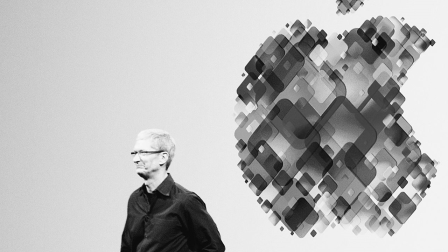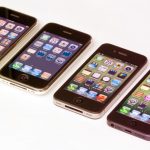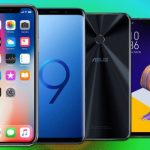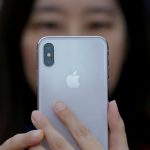Apple Is Doomed And 7 Other Myths About The Company
Why do we talk about Apple so much? Why do we love it or hate it, or sometimes both?
It might be because Apple is the most valuable tech company (and brand) in the world. It might be because its products are aspirational; that is, we believe some kind of status is conferred upon us when we carry one of the pretty things around. I’d argue that it’s also largely because of the Apple story, and it is a good one:
Started in a garage by enigmatic visionary. Company rides the first wave of the personal computer to “household name” status. But the wave flattens, and then Hard Times. Enigmatic visionary is sent away, into exile. Company nearly dies. Brilliant founder returns, pulls company from ashes. Iconic new products happen. Superstardom. Then brilliant founder dies, and a mild-mannered chief operating officer takes over.
The Apple story itself has a mythic quality. So maybe it shouldn’t surprise us that myths are constantly floating around about the company. Here are the big ones and an explanation of how they depart from reality.
Apple Is Doomed Without Jobs’s Vision
Apple may be well into a new stage of its history, and it’s certainly not doomed. What people usually mean when they say “Apple is doomed” is that the company no longer has the ability to conceive of and produce highly innovative, market-disrupting products like the iPod, iPhone, and iPad.
It’s way too early to claim that. When I ask my friends who work for Apple if the company still has the “vision thing,” they get this knowing little grin on their faces and then laugh a little. We’ll be learning a lot more about Apple’s “vision” next year when more information becomes available about its “Project Titan” car project and about its future efforts in virtual reality.
Apple’s financials don’t look like those of a doomed company. Even as iPhone sales have stagnated over the past year (largely because of slowing smartphone replacement rates and market saturation), the company routinely records revenues that dwarf those of other tech giants. In the June quarter, Apple pulled in $42.4 billion, Alphabet $21.5 billion, Microsoft $20.6 billion, and Facebook $6.4 billion.
Tim Cook Lacks The Right Stuff
People often suggest that Apple CEO Tim Cook lacks that mysterious Jobsian quality that will take Apple to the next level of innovation, relevancy, wealth, etc.
In his recent Fast Company feature “Playing The Long Game Inside Tim Cook’s Apple,” Rick Tetzeli points out that in the five years under Cook, Apple’s revenue has tripled, its workforce has doubled, and its global reach has expanded significantly (think China, India). “He will never be as flashy as Jobs, but he may just be the perfect CEO for the behemoth Apple has become,” Tetzeli writes of Cook.
You could argue that success is only the result of very good execution around products that already existed when Cook took over. But even that flavor of argument smells funny. The first wholly new product released during the Tim Cook era, the Apple Watch, is still in its first generation and actually sold more in its first year than the iPhone did in its initial 12 months. The Watch could end up being a blockbuster, especially as Apple adds more health and fitness capabilities.
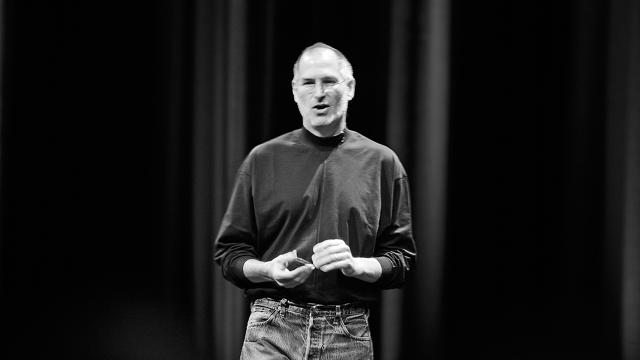
Every Little Thing He Did Was Magic
Steve Jobs was indeed a visionary product maker, but not everything he touched turned to gold. Jobs had as many product fails as successes (it’s just that his successes were monsters). Remember the circular mouse that came with the first iMac in 1997? Or 2001’s PowerMac G4 “Cube” that Apple discontinued after one year? Or the iTunes social recommendation network Ping? There are others.
Apple Must Maintain A Very Limited Product Lineup
When Steve Jobs returned to Apple, he cut 70% of the products that Apple was working on. No more printers. No more Newton PDA. He laid off 3,000 people. Jobs famously drew a matrix with four quadrants: “Pro,” “Consumer,” “Desktop,” and “Laptop.” In his book Steve Jobs, Walter Isaacson gives Jobs credit for saving Apple by refocusing the company on those product areas. That’s probably true.
But the belief that Apple had to have a shockingly limited product lineup to succeed has held on. And in the age of radical consumer choice it’s not nearly so true as it used to be. Apple now sells several flavors of desktops, laptops, tablets, and phones. It sells the Apple TV streaming device. It’s added the Watch, which comes in two sizes and with seemingly endless band and watch material combinations. And there’s a good chance the company will release some sort of augmented reality device, as well as an electric car, in the future.
Still, Apple’s product line is pretty limited when compared to rivals like Samsung. “We still have, for our size, an extremely focused product line,” Cook said in his recent interview with the Washington Post.
“You can literally put every product we make on this table. That really is an indication of how focused it is,” he said. “I think that’s a good thing. Regardless of who you are, there’s only so many things that you can do at a very high-quality and deep, deep level—personally and in business. And so we’re not going to change that. That’s core to our model and way of thinking.”

Apple Is “Behind” On Technology
Tetzeli points out that during its 40-year history, Apple has been seen as a laggard in music, video, the Internet, telephony, wireless, content creation, networking, semiconductors, software applications, touch screens, gesture controls, materials, messaging, news aggregation, social media, voice recognition, and mapping.
It should be well known by now that Apple’s forte has never been rushing in on new technologies and being the first to introduce them to consumers. Apple hangs back. It studies new technologies carefully, and analyzes consumers’ readiness to embrace the technologies even more carefully. When new technologies work well and are ready for mainstream acceptance, Apple integrates them with beautiful hardware and software design.
Case in point today is virtual reality. Apple is likely waiting to see if there’s really going to be a mainstream demand for it. And I’d imagine that people like Jony Ive have a decided distaste for the current, clunky headset form factor the technology has taken. Once people understand what VR is and what the carrot is, and once it can be presented as a sleek product with attractive design, Apple might jump into the game. I’d say we’re at least 18 months away from that.
Apple Can’t Keep Its High Prices And Margins
Well, for the most part, it has. The company released a $399 smartphone, but its big sellers remain top-of-the-line phones like the iPhone 6s that sell for as much as $950 (iPhone 6s Plus 128GB version) with a profit margin of more than 40%.
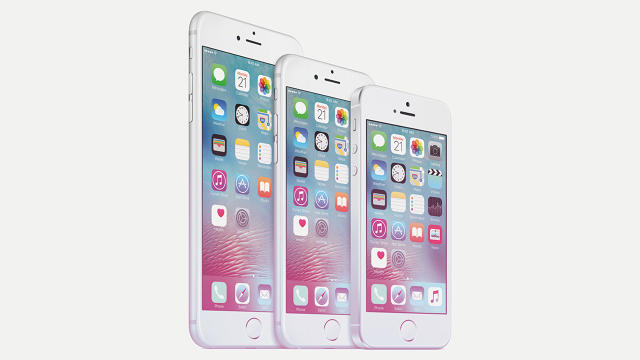
Apple Is Having Trouble Managing Its Suppliers
Tim Cook’s job before becoming CEO five years ago was chief operating officer. His main function was scoring good deals from component suppliers for iPhone parts, and making sure the component supply matched the demand for iPhones. “There is a myth that now that Tim Cook is CEO and not responsible for supply chain that their supply chain is having some problems managing product rollouts and estimating demand,” says Creative Strategies president and long-time Apple analyst Tim Bajarin.
“But I see the supply chain running very smooth and Cook is still deeply involved with helping manage and direct it,” Bajarin says. In fact, a recent analyst report revealed that Apple is applying even more price pressure to its suppliers now that iPhone sales have cooled off.
Innovation Comes In Blinding Flashes
Even Apple’s biggest product successes never really happened like that. The saying “today’s overnight success was 10 years in the making” is more descriptive of how the company’s products come to life. “The world thinks we delivered [a breakthrough] every year while Steve was here,” Apple services chief Eddy Cue told Tetzeli in a recent interview. “Those products were developed over a long period of time.”
Apple keeps a veil of secrecy around new products it’s thinking about or working on. So we don’t hear about the long lead times or get a glimpse of what it will look like when it’s trotted out onto the stage at a future Apple press event. During that lead time, a million iterations take place to refine the original idea—the brilliance of a product often happens slowly during these baby steps, not in a single “voilà” moment.
There are undoubtedly many other Apple Myths. Tell me about your favorites on Twitter: @thesullivan.
Read more stories from inside Tim Cook’s Apple:
- Playing The Long Game Inside Tim Cook’s Apple
- 9 Ways Tim Cook Has Transformed Apple
- Apple Music’s Bozoma Saint John: It’s About Passion, Not Algorithms
- Tim Cook On Apple’s Values, Mistakes, And Seeing Around Corners
- Why Cory Doctorow Thinks Apple’s Disappearing Headphone Jack Should Scare You
- The iPhone 7 Is Coming: Here’s Everything We’ve Heard So Far
- What I Learned Working With Jony Ive’s Team On The Apple Watch
- Four Reasons Why Betting Against Apple Is A Fool’s Game
- The Apple Watch 2: Everything We Know So Far
Fast Company , Read Full Story
(29)

